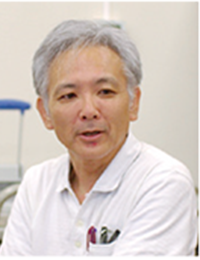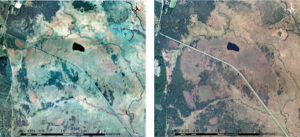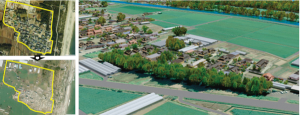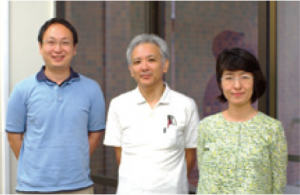キーワード:生態系サービス、生態リスク評価、環境影響評価、環境デザイン、環境マネジメント
 人は周囲の自然環境からさまざまな恩恵(生態系サービス)を受けて生きています。このリサーチユニットでは、気候・地形やそこに暮らす生き物というような自然科学で扱われる分野と、まちづくりや人の暮らしやすさなど社会工学で扱われる分野の連携を図ることで、人と自然が調和しながら生態系サービスが持続的に維持される世界を提案します。
人は周囲の自然環境からさまざまな恩恵(生態系サービス)を受けて生きています。このリサーチユニットでは、気候・地形やそこに暮らす生き物というような自然科学で扱われる分野と、まちづくりや人の暮らしやすさなど社会工学で扱われる分野の連携を図ることで、人と自然が調和しながら生態系サービスが持続的に維持される世界を提案します。
環境を正しく知るために

図1:釧路湿原高層湿原地帯の国土地理院撮影航空写真
左)1977 年9 月23 日撮影、右)2011 年10 月4 日撮影
リサーチユニット代表者である吉野先生は、環境の変化を評価する研究をしています。例えば、釧路湿原の植生を上空から撮影し、過去の写真とも比較を行いながら、44種類に分類した植物群落の経年変化を調査しています(図1)。こうした調査をすることで、堤防建設による影響などを評価しようと試みています。
村上暁信先生は、シミュレーションを活用し、人と環境の関わりを設計する研究者です。例えば、東日本大震災の津波によって失われた集落をCG(コンピュータ・グラフィックス)で再現し、市民との対話を重ねることで“もともとあった自然と市民との関わり合い”を明らかにする研究を進めています(図2)。被災前に当たり前にあった自然と人の関わりを、新しいまちづくりに反映させることを目指しています。

図2:東日本大震災復興計画への参画 左上)震災前の航空写真
左下)震災後の航空写真 右)CG で再現された集落
甲斐田直子先生は、環境の経済価値を把握するための研究を行っています。ベトナム・ニャチャン湾海洋保護区(図3)を舞台に、観光客が保護区対策に対してどの程度の支払い意志があるのかを調査したところ、現状の入島料よりも高い額が妥当と考える観光客が多いことがわかりました。このことから、保護区の経済価値は考えられているよりも高いことがわかります。
このような「環境の把握」「利用の計画」「環境の経済価値の把握」といった異なる視点からのアプローチ・問題意識を、合同ゼミを通して共有することで、人と自然の持続可能な共存関係を明らかにし、政策レベルに提案していくことを目指して研究を進めています。

図3:左)ニャチャン保護区内ムン島の様子、中央)保護区内の漁業禁止区域等を示す看板
右)漁業に代わる収入源として、お土産用の貝殻カーテンを編む島民たち
人が住んでいるところには、必ず人と環境の相互作用がある!

図4:生態系サービスリサーチユニットのメンバー。左から、村上先生、吉野先生、甲斐田先生
人が住む土地には、必ず人と環境の相互作用(インタラクション)があります。言い換えれば、人のいるところには、常に環境の問題・課題があります。このユニットの研究テーマは、国や人を問わず、どこでも誰でも関係することなのです。
社会への貢献・実績
● 常総市、牛久市などの緑地空間整備等に関する委員会委員
● 茨城県環境影響評価審査会委員
●「 つくば市きれいなまちづくり第3次行動計画」策定委員
For the maintenance of sustainable environments
Unit name: Ecosystem Services Studies
Keywords: ecological services, assessment of ecological risks, assessment of environmental influences, environmental designs, environmental management
 Humans are significantly benefiting (or receiving ecological services) from the natural environment surrounding them. The research unit proposes the development of a world in which people live in harmony with nature and ecological services are maintained.
Humans are significantly benefiting (or receiving ecological services) from the natural environment surrounding them. The research unit proposes the development of a world in which people live in harmony with nature and ecological services are maintained.
To correctly understand environments

Figure 1: Aerial photographs of high moor areas in Kushiro Marsh taken by the Geospatial Information Authority of Japan Left) Taken on September 23, 1977 Right) Taken on October 4, 2011
Professor Yoshino, the unit representative, conducts research to assess environmental changes. In his survey, the professor takes aerial photographs of the vegetation in Kushiro Marsh, compares the photos with those taken in the past, and examines changes in vegetation communities classified into 44 types (Figure 1). This survey is conducted to assess the influences of the construction of banks.
Associate Professor Akinobu Murakami is a researcher who designs interactions between humans and environments, utilizing simulations. His research involves the reproduction of settlements damaged by tsunami in the Great East Japan Earthquake using CG, and holds discussions with community residents to examine “the interaction between nature and them in daily life” (Figure 2). The research aims to reflect “the interaction between nature and people that had continued until the earthquake” in the development of new communities.

Figure 2: Participation in the plan for recovery from the Great East Japan Earthquake Upper left) An aerial photograph taken prior to the earthquake Lower left) An aerial photograph taken following the earthquake Right) A settlement reproduced using CG
Assistant Professor Naoko Kaida conducts research to assess the economic values of environments. In a survey conducted in the Nha Trang Bay Marine Protected Area in Vietnam (Figure 3), tourists were asked: “How much are you willing to pay for the protection measures?”, and many of them were willing to pay an amount higher than the current admission fee. This suggests that the actual economic value of the protected area is higher than what it is believed to be.
The members of joint seminars share approaches to the “understanding of environments”, “plans for the use of environments”, and “understanding of the economic values of environments” from different perspectives and their awareness of issues to examine sustainable coexistence between humans and nature, and propose their ideas as policies.

Figure 3: Left) A scene of Hon Mun in the Nha Trang Protected Area Center) A sign with limits on fishery written on it in the protected area Right) Islanders weaving a curtain using seashells for souvenirs to compensate for incomes obtained from fishery
Interaction between people and the environment in any place inhabited by them

Figure 4: Members of the “Ecosystem Services Studies” research unit. Associate Professor Murakami, Professor Yoshino, Professor Kaida (from left to right)
In all areas inhabited by people, interaction between the environment and them occurs. In other words, every place in which people live has environmental problems and issues. The research subject of the unit is related to anyone anywhere, regardless of country or race.
Social contributions and achievements
– A member of the committee on the development of green spInterviewed on July 24, 2015ace in Joso City and Ushiku City
– A member of the committee for the assessment of environmental effects in Ibaraki Prefecture
– A member of the committee for the “3rd action plan for the development of beautiful Tsukuba City”
Interviewed on July 24, 2015
